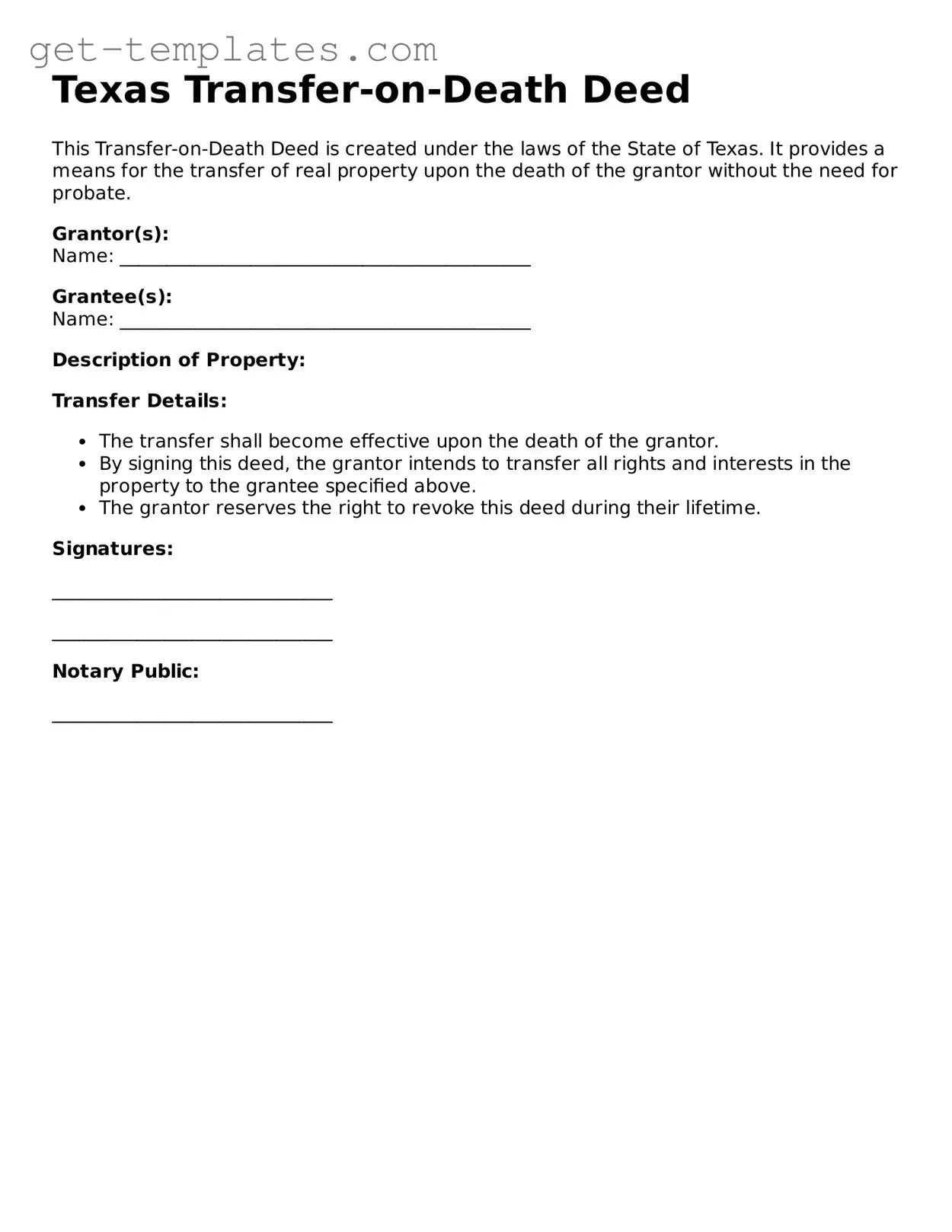What is a Transfer-on-Death Deed in Texas?
A Transfer-on-Death Deed (TODD) is a legal document that allows a property owner in Texas to designate one or more beneficiaries to receive their property upon their death. This deed enables the transfer of property outside of probate, simplifying the process for heirs. It’s a straightforward way to ensure that your property goes to the intended recipients without the complications that often accompany traditional wills.
How does a Transfer-on-Death Deed work?
When you create a TODD, you retain full ownership of the property during your lifetime. You can sell, mortgage, or change your mind about the beneficiaries at any time. Upon your passing, the property automatically transfers to the designated beneficiaries without going through probate. This means that your heirs can gain access to the property more quickly and with less hassle.
Who can use a Transfer-on-Death Deed?
Any individual who owns real property in Texas can use a Transfer-on-Death Deed. This includes homeowners, landlords, and anyone with an interest in real estate. However, it’s important to note that the deed cannot be used for certain types of property, such as community property or property held in a trust.
What are the benefits of a Transfer-on-Death Deed?
-
Avoids probate:
Since the property transfers directly to beneficiaries, it bypasses the often lengthy and costly probate process.
-
Retains control:
You maintain full control over the property during your lifetime, allowing you to make changes as needed.
-
Simple to execute:
The process of creating a TODD is generally straightforward and does not require complex legal procedures.
Are there any drawbacks to using a Transfer-on-Death Deed?
While a TODD offers many advantages, there are some potential drawbacks to consider. For instance, if you have multiple beneficiaries, disagreements may arise regarding the property after your death. Additionally, a TODD does not address other estate matters, such as debts or taxes, which may still need to be settled. It’s essential to weigh these factors carefully before proceeding.
How do I create a Transfer-on-Death Deed?
Creating a TODD in Texas involves several steps:
-
Obtain the Transfer-on-Death Deed form, which is available through legal websites or local county offices.
-
Fill out the form, including your name, the property description, and the names of your beneficiaries.
-
Sign the deed in front of a notary public.
-
Record the deed with the county clerk’s office in the county where the property is located.
Can I revoke a Transfer-on-Death Deed?
Yes, you can revoke a TODD at any time during your lifetime. To do this, you must create a new deed that explicitly revokes the previous one or simply execute a revocation form. It’s crucial to follow the proper procedures for revocation to ensure that your wishes are accurately reflected.
What happens if a beneficiary predeceases me?
If a designated beneficiary passes away before you do, the property will typically go to the remaining beneficiaries listed on the deed. However, if you want to specify what happens to the share of the deceased beneficiary, you should consider including alternate beneficiaries in the deed. This planning can help avoid confusion and ensure that your property is distributed according to your wishes.
Is legal assistance necessary to create a Transfer-on-Death Deed?
While it’s possible to create a TODD without legal assistance, consulting an attorney can provide peace of mind. An attorney can help ensure that the deed is correctly filled out, complies with Texas laws, and fits well within your overall estate plan. This guidance can be particularly valuable if your situation is complex or if you have significant assets.
